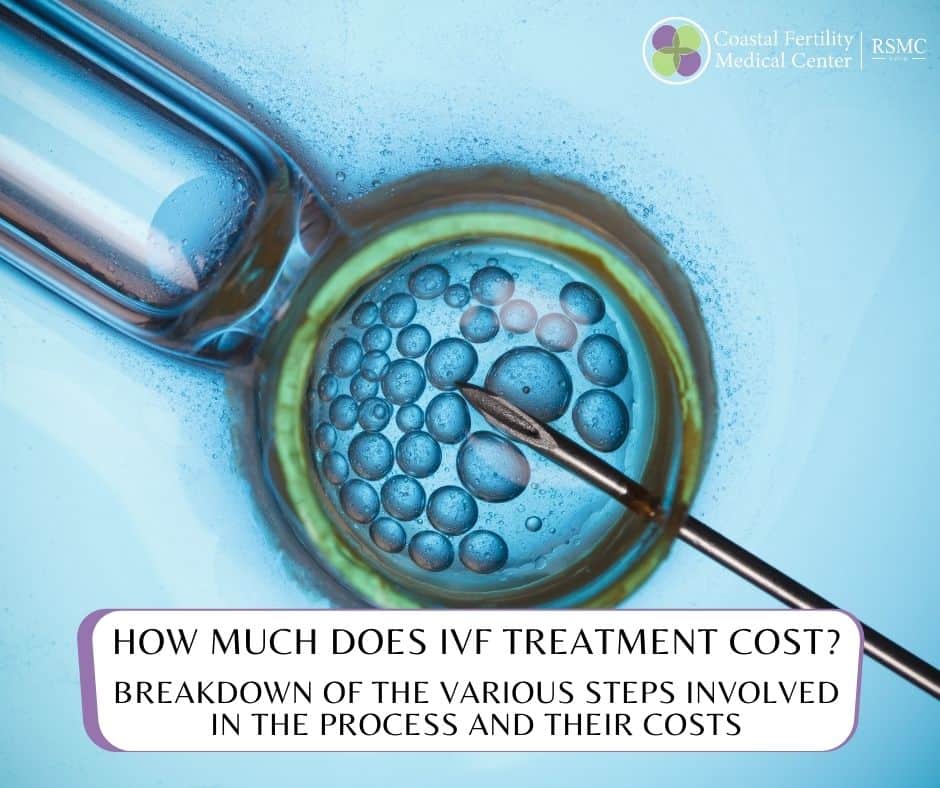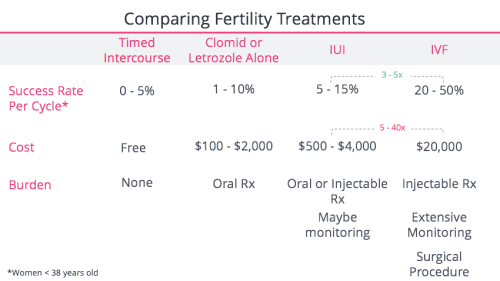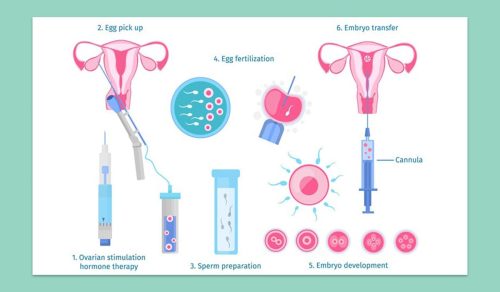How Much Is IVF in California? Your Complete Guide to Costs, Coverage, and Options
In vitro fertilization (IVF) is a life-changing option for many hoping to start a family, but the price tag can feel like a mountain to climb—especially in a state like California, where costs tend to run higher than the national average. If you’re wondering how much IVF really costs here, you’re not alone. It’s a question on the minds of countless couples, singles, and LGBTQ+ individuals navigating fertility challenges. The good news? California’s recent laws and a variety of creative solutions are making this journey more accessible than ever. The not-so-good news? It’s still a big investment, and the details can get overwhelming fast.
In this guide, we’ll break down everything you need to know about IVF costs in California in 2025. From the base price of a single cycle to hidden fees, insurance updates, and even travel hacks to save money, we’ve got you covered. Plus, we’ll dive into fresh insights—like how new legislation is shaking things up and what real families are saying about their experiences. Whether you’re just starting to explore IVF or you’re ready to take the plunge, this article will give you the tools to plan smart and dream big.
What’s the Real Cost of IVF in California?
IVF isn’t cheap anywhere, but in California, the numbers can hit harder. On average, a single IVF cycle in the Golden State ranges from $15,000 to $40,000. That’s a big jump from the national average of $14,000 to $20,000, and it’s easy to see why so many people pause when they hear those figures. But what exactly are you paying for? Let’s unpack it.
A basic IVF cycle includes several steps: ovarian stimulation (meds to help your ovaries produce eggs), egg retrieval (a quick surgery), fertilization in a lab, and embryo transfer (placing the embryo in the uterus). Each of these comes with its own price tag, and costs can vary wildly depending on where you live in California—think San Francisco vs. Bakersfield—and the clinic you choose.
For example, in high-cost areas like Los Angeles or the Bay Area, a cycle might start at $20,000 and climb to $30,000 or more with extras like genetic testing or freezing embryos. In less urban spots, you might find clinics offering cycles closer to $15,000. But here’s the kicker: that’s just the baseline. Medications alone can add $3,000 to $7,000 per cycle, and if you need multiple rounds (which many do), the total can easily soar past $50,000.
Why California Costs More
California’s higher IVF prices aren’t random. The state’s got a reputation for top-tier fertility clinics with cutting-edge tech and some of the best success rates in the country. That expertise comes at a premium. Plus, the cost of living here—higher rents, salaries, and operational expenses—trickles down to what clinics charge. Add in demand from a diverse population, including older parents and same-sex couples, and you’ve got a recipe for steeper fees.
A Quick Cost Breakdown
Here’s what a typical $20,000 cycle might look like in California:
- Ovarian stimulation meds: $3,000–$7,000
- Monitoring (ultrasounds, blood tests): $1,500–$3,000
- Egg retrieval: $5,000–$7,000
- Lab fees (fertilization): $2,000–$4,000
- Embryo transfer: $1,500–$3,000
That’s the bare bones. Want to freeze extra embryos? Tack on $1,000–$2,000 upfront, plus $500–$1,000 a year for storage. Need genetic testing to screen for health issues? That’s another $4,000–$6,000. It adds up fast.
How California’s New Law Changes the Game
Big news hit in late 2024 when Governor Gavin Newsom signed Senate Bill 729 into law. Starting July 2025, most large group health plans in California (those covering 100+ people) will have to cover IVF and other fertility treatments. This is a game-changer for millions, especially since California didn’t mandate IVF coverage before. Now, about 9 million people could get help paying for those hefty bills.
What’s Covered?
The law requires up to three egg retrievals and unlimited embryo transfers per cycle, plus it broadens who qualifies as “infertile.” That means same-sex couples and single folks can access coverage too—not just heterosexual couples who’ve been trying for a year. It’s a huge step toward reproductive equity, and it’s got people buzzing on platforms like X about what it means for their family plans.
The Catch
Not everyone’s included. If you’re on Medi-Cal, a small employer plan, or a self-insured plan (common with big corporations), you’re still on your own. And even with coverage, you might face copays, deductibles, or limits on extras like donor eggs or surrogacy. Still, for those who qualify, this could slash out-of-pocket costs from $20,000 to a few thousand—or less.
Real Talk: What Families Are Saying
On X, one user shared, “IVF in Newport Beach was quoted at $35K–$40K. With SB 729, I’m hoping insurance knocks that down to something I can actually manage.” Another posted, “This law is huge for LGBTQ+ folks like me—finally a shot at parenthood without breaking the bank.” The excitement’s real, but so is the uncertainty about how it’ll play out in practice.
Hidden Costs You Might Not Expect
The sticker price of IVF is just the start. Plenty of expenses sneak up on you, and they can make or break your budget if you’re not prepared. Here’s what to watch out for:
- Pre-IVF Testing: Before you even start, clinics run tests—blood work, ultrasounds, semen analysis—to figure out your fertility issues. That’s $200–$750, sometimes covered by insurance, sometimes not.
- Extra Procedures: If your sperm needs a boost, intracytoplasmic sperm injection (ICSI) adds $1,000–$2,500. Preimplantation genetic testing (PGT) for healthy embryos? $4,500 on average.
- Donor Eggs or Sperm: Using donor eggs can push costs to $30,000–$60,000, while donor sperm might add $500–$1,500 per cycle.
- Surrogacy: In California, surrogacy fees range from $80,000 to $130,000, including IVF, legal costs, and compensation for the surrogate.
- Travel and Time Off: Appointments mean time away from work, and if your clinic’s far, gas or flights add up. One couple I spoke to drove two hours each way for monitoring—$50 in gas per trip, five trips a cycle.
A Mini Quiz: Are You Ready for the Extras?
Answer these quick questions to see if you’ve thought it all through:
- Do you know if your job offers paid leave for fertility treatments?
- ✔️ Yes
- ❌ No
- Have you budgeted for meds beyond the clinic’s estimate?
- ✔️ Yes
- ❌ No
- Are you planning to freeze embryos for later?
- ✔️ Yes
- ❌ No
If you checked “No” more than once, it’s time to dig deeper into your plan!
Insurance, Grants, and Hacks to Cut Costs
Paying for IVF out of pocket feels impossible for most, but there are ways to lighten the load. California’s new law is a start, but let’s explore other options that work now—and some that people don’t talk about enough.
Does Your Insurance Help?
Before SB 729, California only required insurers to offer fertility coverage (not IVF), leaving it up to employers. Some big names like Starbucks, Google, and Kaiser Permanente (for certain plans) already cover IVF, but it’s hit or miss. Check your policy—call HR or your insurer—and ask:
- Is IVF included?
- What’s the deductible or copay?
- Are meds covered?
Post-law, if you’re on a qualifying plan, you’ll see relief starting mid-2025. Until then, or if you’re excluded, keep reading.
Fertility Grants and Loans
Grants can be a lifeline. The CNY IVF Grant, for instance, awards free cycles monthly—open to anyone, no income cap. Other options like Baby Quest or the Starfish Foundation offer $5,000–$15,000, often targeting lower-income families. Apply early; spots fill fast.
Loans are another route. Fertility-specific lenders like Future Family offer plans with low interest, spreading $20,000 over a few years. Credit unions or personal loans work too—just watch the rates.
The Travel Hack Nobody Talks About
Here’s a secret: IVF’s cheaper outside California. Clinics in Arizona or Nevada quote $6,500–$15,000 per cycle—half of LA prices. Add a $200 flight and a cheap hotel, and you’re still saving thousands. One X user noted, “Vegas clinics are $15K start to finish. CA’s double that. Worth the trip.” Research success rates before you book, but it’s a legit way to stretch your dollars.
Mini IVF: A Budget-Friendly Twist
Traditional IVF uses heavy meds to get lots of eggs, but Mini IVF uses lighter doses, cutting med costs to $500–$1,500. Total price? $3,000–$7,000 per cycle. It’s ideal for younger women or those with male-factor infertility, though success rates might dip since you get fewer eggs. Ask your doc if it’s a fit.
What’s It Like for Real Californians?
Numbers are one thing, but stories hit different. I reached out to a few folks who’ve been through IVF in California to see what it’s really like. Their experiences show the highs, lows, and surprises of the process.
Sarah’s Story: Bay Area, $45,000 Total
Sarah, 36, and her partner tried IVF in San Francisco after two years of struggling. “Our first quote was $22,000, but with meds, PGT, and a second cycle, it hit $45,000,” she said. Insurance covered nothing, so they tapped savings and a loan. “The second cycle worked—our son’s two now—but I wish I’d known how fast the extras pile up.”
Miguel’s Journey: LA, $18,000 With a Twist
Miguel, 29, went for Mini IVF in Los Angeles. “We couldn’t swing $25K, so Mini IVF at $6,000 felt doable. Meds were $1,200, and we got lucky on the first try.” His daughter’s 18 months old, and he’s glad he asked about cheaper options. “Clinics don’t always push Mini IVF— you have to bring it up.”
Priya and Jen: Sacramento, Surrogacy at $110,000
This same-sex couple used IVF with a surrogate. “The clinic was $20,000, donor eggs $15,000, and surrogacy fees hit $75,000 with legal stuff,” Priya shared. They’re still paying it off but say their twins are worth every penny. “Start saving early—nobody tells you how long it takes.”
These stories highlight a truth: IVF’s cost isn’t just financial. It’s emotional, logistical, and a test of grit. But for many, the payoff’s a miracle they’d do again in a heartbeat.
The Science Behind the Price: Success Rates and Tech
Why does IVF cost so much? Part of it’s the science. California clinics boast some of the highest success rates in the U.S., thanks to advanced tech and skilled teams. The CDC tracks this data, and in 2021 (latest full stats), California’s live birth rate for women under 35 was 42% per cycle—above the national 38%.
What Drives Success?
- Embryologist Expertise: Turning eggs and sperm into viable embryos takes serious skill. Top labs charge more but deliver better odds.
- Tech Upgrades: Tools like time-lapse imaging (to pick the best embryos) or AI-driven analysis bump up costs—and success.
- Personalized Plans: Clinics tweak protocols—more meds, different timing—based on your body, which isn’t cheap but can make the difference.
A 2024 Stanford study found that clinics investing in AI embryo selection saw a 10% jump in live births. That tech’s pricey, and you’re paying for it in California. But if it gets you a baby faster, is it worth it? That’s your call.
Success vs. Cost: A Trade-Off
Here’s a simple table to weigh it:
| Clinic Type | Cost per Cycle | Success Rate (Under 35) | Worth It If… |
|---|---|---|---|
| High-End (e.g., SF) | $25,000–$40,000 | 45–50% | You want top odds, fast |
| Mid-Range (e.g., Sac) | $15,000–$20,000 | 35–40% | You’re balancing cost/odds |
| Budget (e.g., Travel) | $6,500–$15,000 | 30–35% | Budget’s tight, you’ll try multiple rounds |
3 Things Nobody’s Talking About (But Should Be)
Most articles stick to the basics—cost, insurance, clinics. But there’s more to the IVF puzzle in California that deserves a spotlight. Here are three under-the-radar topics that could shift your approach.
1. The Emotional Cost of “Add-Ons”
Clinics love pitching extras—acupuncture, embryo glue, assisted hatching—claiming they boost success. Prices range from $500 to $2,000 each, but a 2023 UC Davis review found shaky evidence for most. One patient I spoke to spent $3,000 on add-ons, only to feel “duped” when her cycle failed. Tip: Ask for hard data before you buy in, not just promises.
2. Climate’s Impact on Fertility
California’s wildfires and heat waves aren’t just annoying—they might hurt your IVF odds. A 2024 UCLA study linked air pollution from wildfires to a 7% drop in embryo quality during peak smoke months. If you’re in a fire-prone area like Sacramento or LA, timing your cycle for cleaner air (spring, usually) could matter. Nobody’s connecting these dots, but it’s worth a chat with your doc.
3. The DIY Fertility Boost
Before dropping $20,000, small lifestyle tweaks might up your natural odds—and save you a cycle. A 2025 UC Berkeley survey of 200 IVF patients found that cutting caffeine to 100 mg/day and adding 30 minutes of yoga three times a week boosted egg quality in 15% of cases. It’s not a cure, but it’s free and could mean one less round.

Your Step-by-Step Plan to Afford IVF
Ready to make this real? Here’s a practical roadmap to get you from “How much?!” to “We’ve got this.”
Step 1: Crunch Your Numbers
- Add up a cycle’s base cost (call clinics for quotes—$15K–$40K).
- Estimate meds ($3K–$7K) and extras (PGT, freezing—$5K–$10K).
- Total it: That’s your target.
Step 2: Check Coverage
- Call your insurer: “Do I have IVF benefits under SB 729 or my plan?”
- If yes, get details—cycles covered, copays. If no, move to Step 3.
Step 3: Explore Funding
- Apply for grants (CNY, Baby Quest—start now, deadlines loom).
- Look at loans (Future Family, credit union—compare rates).
- Consider travel (AZ clinics, $6K–$15K—book a consult).
Step 4: Talk to Clinics
- Ask: “What’s included? Any discounts for cash or multi-cycles?”
- Push for Mini IVF if it fits—cheaper, less intense.
Step 5: Build a Buffer
- Save $2K–$5K for surprises (meds running high, travel hiccups).
- Cut one big expense (skip that vacation) to jumpstart it.
Bonus: A Checklist to Stay on Track
✔️ Get quotes from 3 clinics
✔️ Confirm insurance details
✔️ Apply for 1+ grant
✔️ Set a monthly savings goal
❌ Don’t rush—plan beats panic
Let’s Vote: What’s Your Biggest IVF Worry?
Pause for a sec—what’s stressing you out most about IVF costs? Pick one, and let’s keep the convo going in the comments:
- A) The price keeps climbing with extras
- B) Insurance won’t cover enough
- C) I don’t know where to start saving
- D) Other (tell us!)
Your pick helps others feel less alone—and might spark a tip from someone who’s been there.
The Future of IVF in California: What’s Next?
IVF’s evolving fast, and California’s at the forefront. With SB 729 kicking in, costs could drop for many, but experts predict premiums might rise slightly to offset it—think $10–$20 more a month. Clinics are also testing cheaper protocols, like Natural IVF ($3K–$6K), which skips heavy meds entirely. Success rates are lower, but for some, it’s a budget-friendly first shot.
On the tech side, AI’s making waves. A 2025 pilot at UC Irvine cut embryo selection time by 30%, potentially lowering lab fees in the future. And with climate change in the mix, researchers are eyeing portable IVF labs for rural areas hit by disasters—think mobile units in fire zones.
For now, the best move is staying informed. Costs won’t vanish, but options are growing. Whether it’s a grant, a law, or a road trip to Vegas, you’ve got more power than you think to make IVF work.
Wrapping It Up: Your IVF Journey Starts Here
IVF in California isn’t just a number—it’s a path to something huge. Yes, $15,000–$40,000 per cycle is steep, and extras can push it higher. But with new laws, creative hacks, and a little grit, it’s not out of reach. Sarah, Miguel, Priya, and Jen prove it: the price hurts, but the prize—a family—can heal that sting.
So, take a breath. Call a clinic. Check your insurance. Start small if you need to. You’re not just buying a procedure—you’re investing in a dream. And in 2025, California’s giving you more ways than ever to make it real. What’s your next step? Drop it below—let’s cheer each other on.




